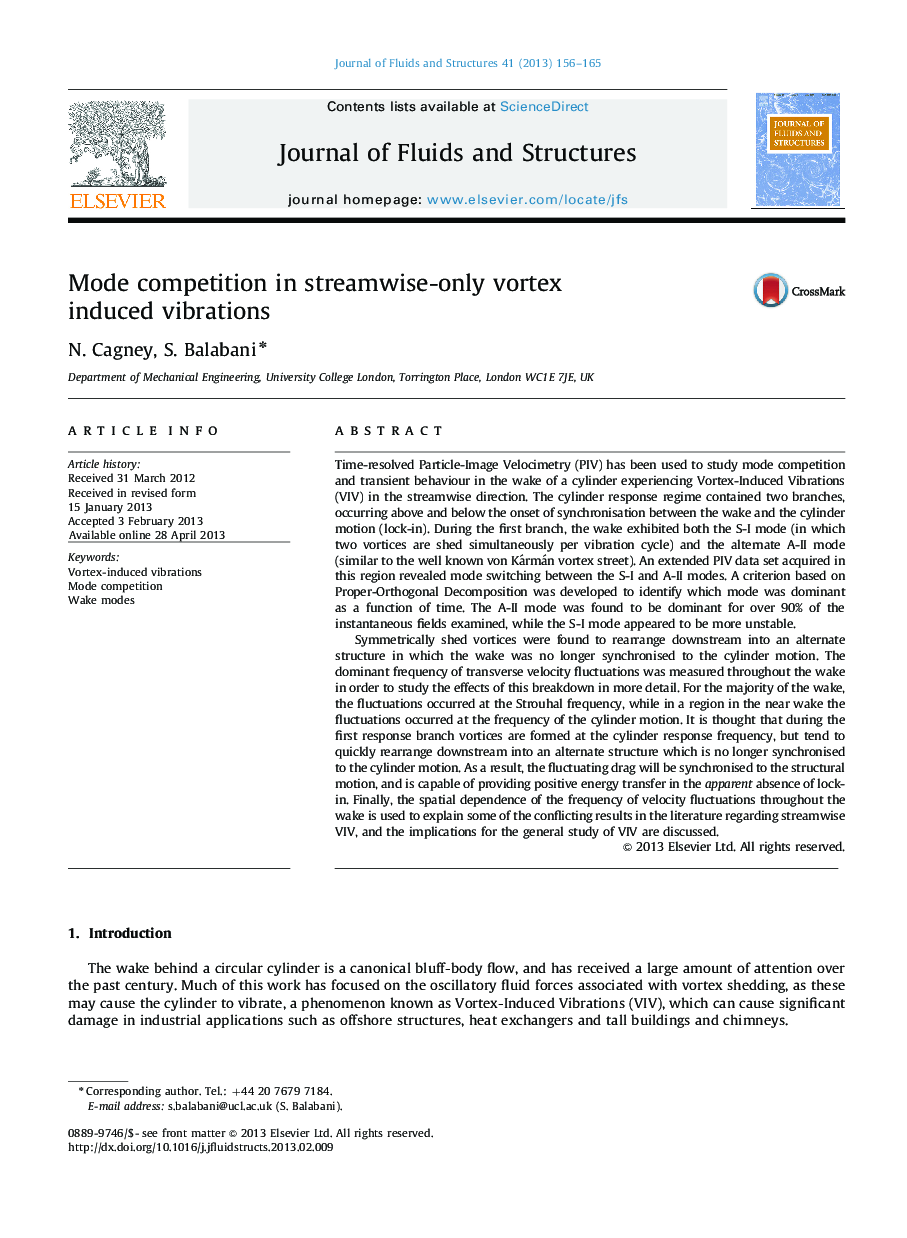| کد مقاله | کد نشریه | سال انتشار | مقاله انگلیسی | نسخه تمام متن |
|---|---|---|---|---|
| 789554 | 1466606 | 2013 | 10 صفحه PDF | دانلود رایگان |

Time-resolved Particle-Image Velocimetry (PIV) has been used to study mode competition and transient behaviour in the wake of a cylinder experiencing Vortex-Induced Vibrations (VIV) in the streamwise direction. The cylinder response regime contained two branches, occurring above and below the onset of synchronisation between the wake and the cylinder motion (lock-in). During the first branch, the wake exhibited both the S-I mode (in which two vortices are shed simultaneously per vibration cycle) and the alternate A-II mode (similar to the well known von Kármán vortex street). An extended PIV data set acquired in this region revealed mode switching between the S-I and A-II modes. A criterion based on Proper-Orthogonal Decomposition was developed to identify which mode was dominant as a function of time. The A-II mode was found to be dominant for over 90% of the instantaneous fields examined, while the S-I mode appeared to be more unstable.Symmetrically shed vortices were found to rearrange downstream into an alternate structure in which the wake was no longer synchronised to the cylinder motion. The dominant frequency of transverse velocity fluctuations was measured throughout the wake in order to study the effects of this breakdown in more detail. For the majority of the wake, the fluctuations occurred at the Strouhal frequency, while in a region in the near wake the fluctuations occurred at the frequency of the cylinder motion. It is thought that during the first response branch vortices are formed at the cylinder response frequency, but tend to quickly rearrange downstream into an alternate structure which is no longer synchronised to the cylinder motion. As a result, the fluctuating drag will be synchronised to the structural motion, and is capable of providing positive energy transfer in the apparent absence of lock-in. Finally, the spatial dependence of the frequency of velocity fluctuations throughout the wake is used to explain some of the conflicting results in the literature regarding streamwise VIV, and the implications for the general study of VIV are discussed.
Journal: Journal of Fluids and Structures - Volume 41, August 2013, Pages 156–165